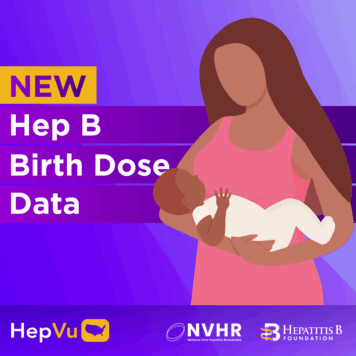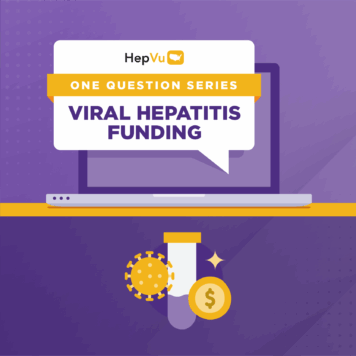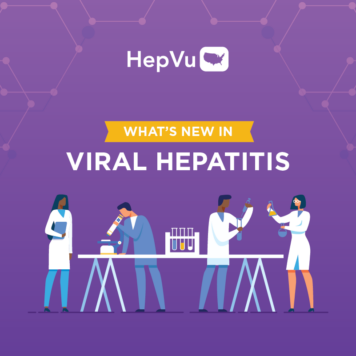Dr. Melissa Wardle is an infectious disease epidemiologist whose work broadly focuses on strengthening public health systems. Over the years, she has worked across global, state, and local levels on pediatric vaccine-preventable diseases, parasitic infections, viral hepatitis, as well as their related chronic conditions. Her efforts focus on making complex information clear, reliable, and actionable to support more equitable access to prevention, diagnosis, treatment, and care. Dr. Wardle holds a PhD in Epidemiology from Oregon Health & Science University-Portland State University, an MPH in Global Epidemiology from Emory University, and a BS in Biology from the University of Alaska Anchorage.
What drew you to public health generally and viral hepatitis specifically?
The story I always come back to is a conversation I had with my grandmother when I was in middle school. I had this school assignment where I needed to interview someone at least 50 years older than me and ask them about the biggest change they’d seen in their lifetime. Without skipping a beat, she said, “Polio and vaccines.”
She talked about how, as a child, she couldn’t go outside during the summer because of polio outbreaks—her mom would keep her inside because she was genuinely afraid she’d catch it. That was a very real risk back then. Today, thanks to vaccines, polio is almost nonexistent in most parts of the world. Hearing that made a lasting impression on me. It sparked this deep curiosity about public health—especially immunization—and how we can prevent suffering at scale.
That led me to CDC, where I spent about seven years working in global immunizations. I had the opportunity to support countries’ efforts to strengthen routine immunization schedules, including Hepatitis B vaccines, whether through birth doses or child welfare visits.
Later, while pursuing my PhD, viral hepatitis came back into my life in a new way. I worked with the Oregon State Authority on their viral hepatitis program, using All Payer All Claims data we were able to assess who was getting screened and tested for Hepatitis C, and then link laboratory surveillance data to claims to understand whether they were being connected to treatment. With the advancements in Hep C treatment, it felt like an important moment to help bridge that gap—between diagnosis and care.
Why is robust viral hepatitis surveillance essential to achieving national public health goals, such as those outlined in the HHS Viral Hepatitis National Strategic Plan?
Public Health surveillance might not get a lot of attention, but it’s absolutely foundational. When we have steady, accurate, and reliable information, we can make more informed decisions—whether it’s as individuals, communities, or public health systems.
It helps us understand where hepatitis is spreading, who is being affected, and how we can reach people with preventative care like vaccines and screening, as well as testing, treatment, and care to those who are already infected. It also shows us who is being missing by current outreach, prevention, and care efforts. Surveillance isn’t just about tracking numbers—it’s also about enabling action, especially in communities that face the greatest barriers to care. And when the data is rooted in local context and systems, it becomes even more powerful. It allows us to focus our limited resources where they can have the biggest impact, reduce health disparities, and ultimately work towards the national goal of eliminating viral hepatitis as a public health threat.
HepVu’s annual Surveillance Status Report attempts to gauge local health departments’ ability to conduct key surveillance activities for Hepatitis B and C. What do you think are some of the most interesting insights from that report?
What really struck me was just how much progress jurisdictions have made—often while working under persistent resource constraints. Over the past three years, many have expanded features of their surveillance system, while others focused on maintaining or refining their systems, and across the board, we saw systems grow stronger and capacity increase in really impressive ways.
We saw improvement across all the key indicators, both in terms of staffing and in how well the data could be used to guide hepatitis responses. These advances speak to the adaptability, resourcefulness, and commitment of health departments across the country. Despite diverse and ongoing challenges, they continue to make meaningful, measurable strides—and that’s incredibly encouraging. It’s been such an honor to learn about the evolving status of viral hepatitis surveillance systems across the US.
With recent increases in Hepatitis C among young adults and pregnant women, how can enhanced surveillance help identify and respond to emerging trends more quickly?
That’s exactly where surveillance can make such a difference. Hepatitis C is often called a “silent” infection because most people don’t experience symptoms—so many don’t even know they have it. In fact, nearly one in three people with hepatitis C are unaware of their status.
We have affordable, accessible screening tools—we can test people for viral hepatitis at any stage of life. The CDC recommends universal hepatitis C screening for everyone 18 years and older, during pregnancy, and more frequent screening for those in high-risk groups.
When we can identify infections earlier, we can connect people to treatment sooner. That’s why expanding routine screening is so important – not only to prevent long-term complications like liver disease or cancer, but also to stop the virus from spreading.
So yes, enhanced surveillance helps us see these trends as they are shifting in real time —whether that’s among young adults, pregnant people, or others – and respond quickly. That might mean through tailored outreach efforts, policy changes, or improving access to health care. But it all starts with identifying who’s at risk and making sure we’re reaching them with the services they need.
How does federal funding—or the lack thereof—impact the ability of states and local health departments to sustain and improve viral hepatitis surveillance systems?
The HepVu report clearly shows the difference that federal funding makes. You can literally see it in the data—overall, we saw meaningful improvements in key indicators across all jurisdictions. Those that previously received federal funding started from a higher baseline, and still showed positive progress over the last three years. And jurisdictions that were newly funded were able to narrow gaps across key indicators, and in some cases close them altogether.
Something that stood out to me from the data was the importance of stable and predictable funding. When jurisdictions know they’ll have resources year over year, they can shift from contingency planning to long-term strategy. They can build durable systems—ones that are more consistent, accurate, reliable, and usable. That kind of investment doesn’t just improve surveillance, but it strengthens the broader public health system’s ability to respond to emerging threats, connect more people to care, and ultimately save lives.




